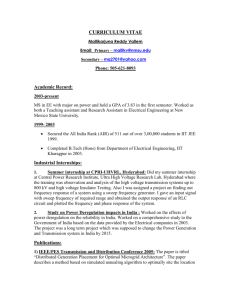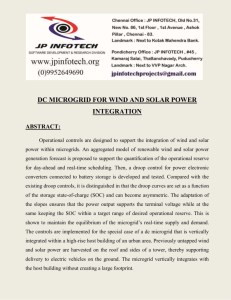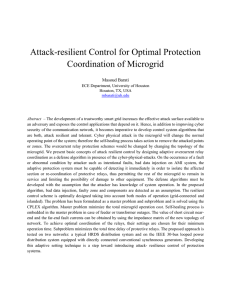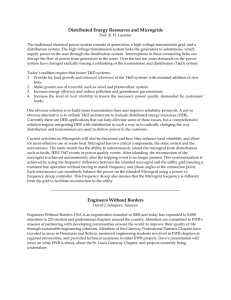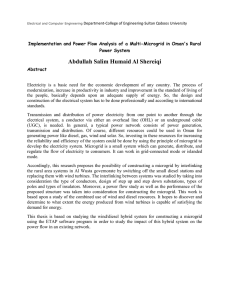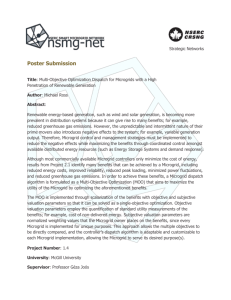Microgrid Environmental Economic Dispatch: Table of Contents
advertisement
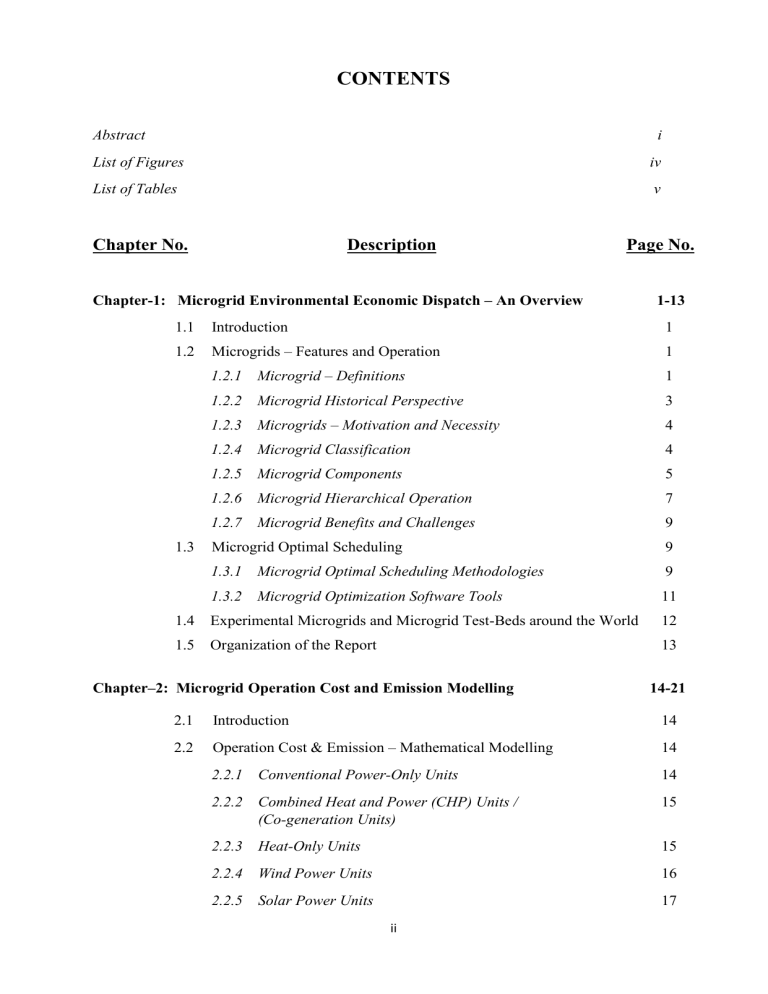
CONTENTS Abstract i List of Figures iv List of Tables v Chapter No. Description Page No. Chapter-1: Microgrid Environmental Economic Dispatch – An Overview 1-13 1.1 Introduction 1 1.2 Microgrids – Features and Operation 1 1.3 1.2.1 Microgrid – Definitions 1 1.2.2 Microgrid Historical Perspective 3 1.2.3 Microgrids – Motivation and Necessity 4 1.2.4 Microgrid Classification 4 1.2.5 Microgrid Components 5 1.2.6 Microgrid Hierarchical Operation 7 1.2.7 Microgrid Benefits and Challenges 9 Microgrid Optimal Scheduling 9 1.3.1 Microgrid Optimal Scheduling Methodologies 9 1.3.2 Microgrid Optimization Software Tools 11 1.4 Experimental Microgrids and Microgrid Test-Beds around the World 12 1.5 Organization of the Report 13 Chapter–2: Microgrid Operation Cost and Emission Modelling 14-21 2.1 Introduction 14 2.2 Operation Cost & Emission – Mathematical Modelling 14 2.2.1 Conventional Power-Only Units 14 2.2.2 Combined Heat and Power (CHP) Units / (Co-generation Units) 15 2.2.3 Heat-Only Units 15 2.2.4 Wind Power Units 16 2.2.5 Solar Power Units 17 ii 2.2.6 Diesel Generating Units 18 2.2.7 Gas Turbines 18 2.2.8 Fuel Cell Plants 19 2.2.9 Microturbines 19 2.2.10 Battery Banks 20 2.2.11 Power Purchase from the Main Grid 20 2.2.12 Emission / Carbon Tax 20 2.2.13 Total Power Transmission Loss 21 2.2.14 Total Heat Transmission Loss 21 Chapter–3: Microgrid Environmental Economic Dispatch - Problem Formulation 22-26 3.1 Objective Functions 22 3.2 Constraints and Limits 22 3.3 MG EED Problem Formulation 25 Chapter–4: Microgrid Dynamic Economic/Emission Dispatch – A Case Study 27-32 4.1 Introduction 27 4.2 Mathematical Formulation of DEED Problem including PEVs 28 4.3 Strategy for Peak Shaving and Valley Filling 30 4.4 Scheduling Strategy 30 4.5 Simulation Results and Analysis 31 Chapter-5: Conclusions 36 References 37 iii

